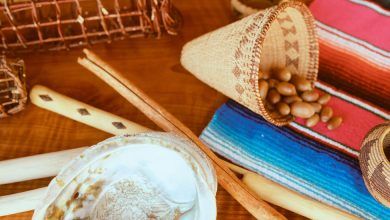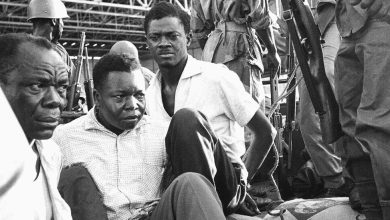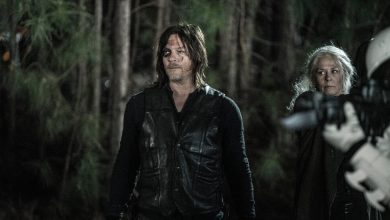How ‘Lord of the Rings’ Became ‘Star Wars’ for Millennial Women

Shortly after the release of the final installment of the “Lord of the Rings” trilogy, the film critic Caryn James pondered in these very pages whether women were “just bored” when it came to Peter Jackson’s blockbuster films.
“Any movie so popular has to grab an audience across all lines of age and sex,” James wrote. “But both demographic and empirical evidence suggests that the trilogy is still primarily a boys’ toy.”
Whether women at that time felt enthralled or bored with these films, which began 20 years ago this month with “The Fellowship of the Ring,” isn’t for me to say. But I know that I, then a 13-year-old girl, and my 12-year-old sister, loved the story of Sam and Frodo and their quest to destroy the One Ring. And we weren’t alone.
“I was obsessed with the DVDs,” Karen Han, 29, a TV and film writer based in Los Angeles, said. “I think it was pretty much every holiday, I would watch all three movies in a day and do a marathon, and I would do that pretty much every year.”
For a certain subset of Millennial women, the “Lord of the Rings” film trilogy occupies the same role that “Star Wars” might for those who grew up from the late ’70s into the ’80s: It’s become a treasured part of the comfort-watch genre for women in their late 20s and 30s.
In the years after the films came out, rewatching them felt like a ritual only my sister and I observed. (My parents saw them with us in theaters, then never watched them again.) Through college, I met the occasional “Lord of the Rings” girl — a few friends in graduate school, and strangers on drunken nights out. And, of course, there were the memes and the accompanying meme accounts.
Then a few years ago, I began to notice the articles on The Cut and elsewhere. “What of the Boromir Woman?” “I’m Always Horny for Sauron.” “The Greatest Christmas Movie Is ‘The Lord of the Rings.’”
“We all loved ‘Lord of the Rings,’” said Gabriella Paiella, 32, a culture writer for GQ and former staff writer at The Cut. “That definitely did heighten my sense that there was a specifically female interest in these movies that I hadn’t necessarily thought of before because I think the world of ‘Lord of the Rings’ is sort of thought of as a nerdy male interest.”
Jokes and memes remained a fantastic way fans could bond, but Paiella and other women who came of age in the era of “Lord of the Rings,” say their passion for the movies is much deeper and more emotional. It’s an attachment that grew alongside the films’ most poignant, Howard Shore score-backed moments: “Don’t you know your Sam?” “I know your face” and “I would have followed you, my brother, my captain, my king.”
“The overall message of this story is that as long as you have love and hope in each other, victory or triumph is still possible,” Han said, explaining, “It is technically an epic fantasy adventure, but I don’t think it hews to the same kind of ideas of masculinity and power that a lot of these stories traditionally do.”
Explore the World of the ‘Lord of the Rings’
The literary universe built by J.R.R. Tolkien, adapted into a popular film series in the early 2000s, inspired generations of readers and viewers.
- Artist and Scholar: Tolkien did more than write books. He invented an alternate reality, complete with its own geography, languages and history.
- Being Frodo: The actor Elijah Wood explains why he’ll never be upset at being associated with the “Lord of the Rings” movie series.
- A Soviet Take: A 1991 production based on Tolkien’s novels, recently digitized by a Russian broadcaster, is a time capsule of a bygone era.
- From the Archives: Read what W.H. Auden wrote about “The Fellowship of the Ring,” the first volume of Tolkien’s trilogy, in 1954.
The trilogy’s primary romantic relationship may be between Aragorn (Viggo Mortensen) and Arwen (Liv Tyler), the reluctant heir to Middle-earth’s throne and his half-Elven love interest. But both Paiella and Han argue that the connection between the two is no less tender than the heart-rending death of Boromir (Sean Bean) — whose desperation to save Middle-earth leads him to try to steal the Ring — with Aragorn at his side, at the end of the first film.
It’s the kind of moment not often found in male-oriented action films, and in certain corners of the internet, like LiveJournal and Tumblr, that tenderness — between Frodo and Sam, Legolas and Gimli, Merry and Pippin, Gandalf and Bilbo — became the focal point of “Lord of the Rings” fan fiction.
“I was absolutely obsessed with reading gay hobbit erotica,” said Chelsea McCurdy, 35, who works for a nonprofit based in Conway, Ark. “And I think that was a huge deal for me as far as my queer journey and the love for these movies.”
McCurdy, who is married to a transgender man and estimates that they watch at least one of the films every two to three weeks, said her fascination went beyond being “a horny teenager,” adding, “Nothing feels unsafe because the good guys are all actually good. And there’s no rape, there’s nothing that makes you feel uncomfortable as a woman in the entire trilogy.”
Indeed, the films’ most toxic male characters often meet satisfying ends. They’re stabbed in the back and impaled (Saruman), shot with arrows (Grima Wormtongue), or fall to their deaths after setting themselves on fire (Denethor).
Twenty years later, McCurdy remains especially moved by the female characters — Arwen, Galadriel (Cate Blanchett) and Eowyn (Miranda Otto) — whose roles were enhanced in the screenplays by Fran Walsh, Peter Jackson’s longtime partner, and their writing collaborator Philippa Boyens.
“My all-time favorite No. 1 scene is ‘I am no man,’” said McCurdy, referring to the pivotal scene in which Eowyn kills Sauron’s most terrifying servant, the Witch-king of Angmar. “That whole scene just makes me have goose bumps, and baby feminist Chelsea just ate that up.”
Han, the television writer, agreed, although she was reluctant to use the phrase “strong female character.” She explained, “Whenever people try to do that in contemporary cinema, it always feels like such a shallow and facile understanding, but ‘The Lord of the Rings’ really knocked it out of the park.”
That these female characters and many of their male counterparts are white (as are most characters in the film) hasn’t diminished the trilogy’s staying power, even for those who now hold Hollywood to a much higher standard. “It’s just kind of beyond critique for me because I think I consumed it so young and because I see it, even if the movies happened recently, as like such an old, immovable work,” said Sara David, 32, an editor at Vice Media and union organizer. “I didn’t notice any lacking gender or race analysis in it because this story is so old and generic good vs. evil, you know?”
For Han, it’s not the filmmakers’ treatment of the action scenes that stands out but their handling of the relationships “and the very beautiful and ornate way that they rendered the world, which I think doesn’t mean that it doesn’t appeal to men, but definitely is more open to more people of more backgrounds finding something to love within it.”
Whether tween girls will enjoy these films today or develop any kind of attachment to them the way I did is up for debate. (Marvel movies, these are not.) But the four women I spoke to agreed that if you want to embrace all nine hours of the “Lord of the Rings” saga, it’s easier to do so when you’re young.
“It’s one of those things that you have to just get into at the right time of your life,” Paiella said, adding, “Encountering it as an adult, I think this is not going to have the same effect. Your guard is just down at that age in a way that it’s not when you’re an adult.”





